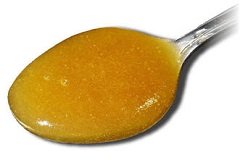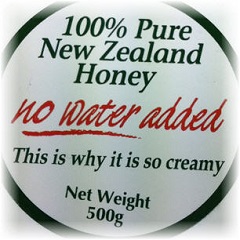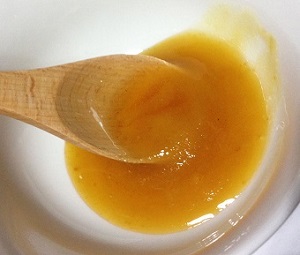cream honey
Big Misconceptions of Cream Honey (See How 1 Honey Co. Makes Erroneous Claims)
Why is my cream honey turning into dark liquid!
Cream honey, also known as whipped honey or spun honey differentiates itself from liquid honey with its spreadable, smooth and butter-like consistency.
Despite its popularity here, it is a much misunderstood honey type. Many people think that cream honey is a special type of honey harvested in a creamy form, without realizing that its most original form is actually liquid.
What is Cream Honey?

Cream honey is made by blending granulated honey (or crystallized honey) and liquid honey and spinning the mixture. The more you spin it, the creamier and more stable it becomes. The color of honey also becomes more pale. The mixture is then stored at a low temperature to produce a firm and creamy texture. No emulsifiers are supposed to be used to thicken or harden the honey.
While the process of making creamy honey is not common knowledge amongst consumers, the fact that creaming honey actually goes beyond a rationale associated with palate preference is even harder for consumers to appreciate. Like buying most groceries, buying honey is a pretty brainless activity. Constructing in the mind a scene of busy honeybees foraging amongst the blossoms, collecting nectar, and the beekeepers extracting honey from the dripping honeycombs when one is sending a blob of honey into the mouth is probably not so easy.
Blatant, Erroneous Honey Claims

Merchant’s overzealousness in marketing honey and boosting their sales doesn’t help in promoting the correct understanding about cream honey. This label taken from a popular brand of creamy honey (as shown on the left) that I found in the local supermarket shelves is a good example. It blatantly and erroneously suggests that creamy honey is pure, unadulterated honey, and implies that liquid honey is not creamy because it has water added.
Why Granulate Honey?
So, why cream honey? Almost all honey crystallizes, some while still in the comb, others within a few days, weeks or months after being extracted. There are a few exceptions, such as Tupelo honey which remains in the liquid state for years after being extracted.
Not only does crystallization make honey appear ugly and sugary, it gives a course and grainy sensation in the mouth that most consumers are unable to appreciate.
Many consumers associate the granulated look and unpleasant texture with fake, poor quality honey or honey adulterated with white sugar. They have no idea that crystallization is a natural process of honey and will not compromise the quality honey in any way. It’s hard for them to believe that sugary it may taste, it is still pure, natural good sugar from the bees! Hence, because certain varietals of honey rush to crystallize, manufacturers would heat up (pasteurize) their honey or cream the honey to slow down or prevent crystallization from happening.
Unfavorable Climate for Creamy Honey

The sticky issue with creamy honey is that they don’t do well in in low latitudes countries. For instance, the warm climate here in Singapore tends to affect creamy honey stored at room temperature and causes it to become unstable and turn it back into liquid honey overtime. (See above picture of a partially liquified cream honey.)
It is common to find imported creamy honey in the warehouse turning darker in color and part of it transforming into liquid form, forming a separate dark liquid on top of the bottle. Little do consumers realize that the heat here can affect the viscosity of creamy honey and that creamy honey returning back to its original form and color is a natural phenomenon that doesn’t hurt honey quality at all.